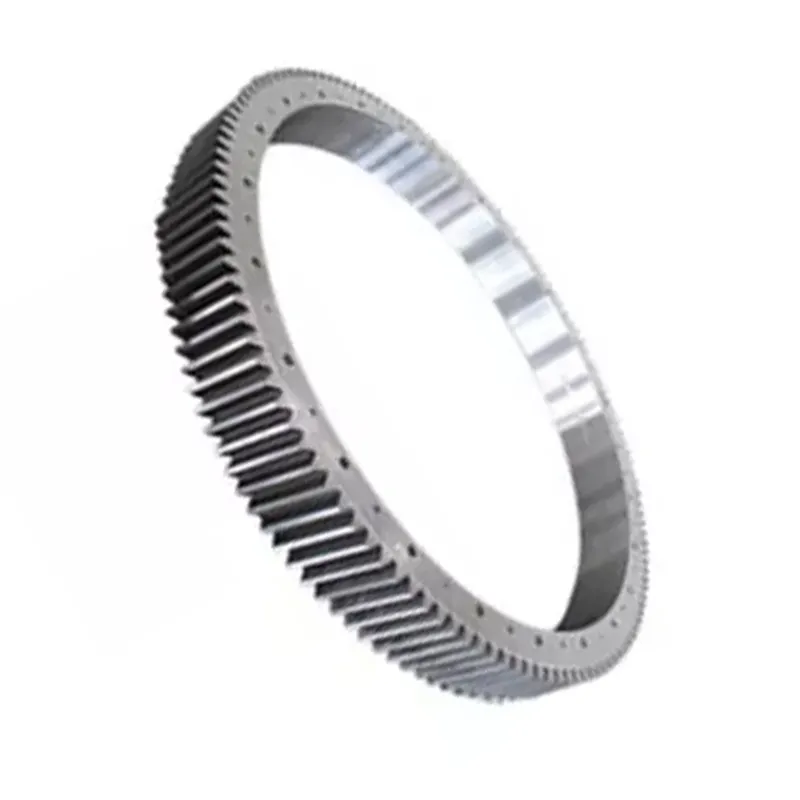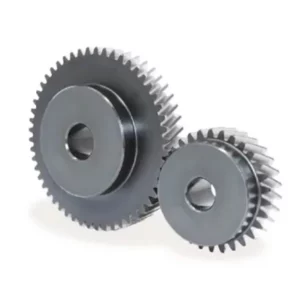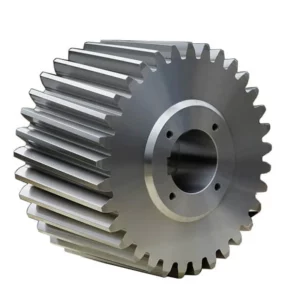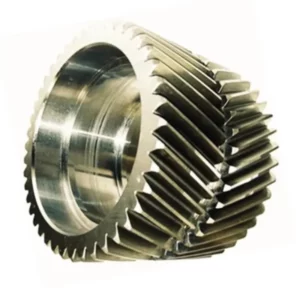Helical Ring Gear Specification
|
Internal gears and internal splines
|
|||
|
Teeth Milling
|
Teeth Shaping
|
Teeth grinding
|
|
|
Maximum O.D.
|
2500mm
|
2500mm
|
2500mm
|
|
Minimum I.D.
|
650mm
|
50mm
|
100mm
|
|
Maximum Face Width
|
500mm
|
500mm
|
500mm
|
|
Maximum Diametral Pitch
|
DP1
|
DP1
|
DP0.5
|
|
Maximum Module
|
26mm
|
26mm
|
45mm
|
|
AGMA Grade / DIN Grade
|
DIN grade 8
|
DIN grade 8
|
DIN grade 4
|
|
Tooth Finish
|
Ra 3.2
|
Ra 3.2
|
Ra 0.6
|
|
Maximum Helix Angle
|
±22.5°
|
±22.5°
|
±45°
|
|
External gears and external splines
|
|||
|
Maximum O.D.
|
1250mm
|
2500mm
|
2500mm
|
|
Minimum I.D.
|
20mm
|
200mm
|
20mm
|
|
Maximum Face Width
|
500mm
|
500mm
|
1480mm
|
|
Maximum Diametral Pitch
|
DP 1
|
DP 1
|
DP 0.5
|
|
Maximum Module
|
26 mm
|
26 mm
|
45 mm
|
|
AGMA Grade / DIN Grade
|
DIN grade 8
|
DIN grade 8
|
DIN grade 4
|
|
Tooth Finish
|
Ra 3.2
|
Ra 3.2
|
Ra 0.6
|
|
Maximum Helix Angle
|
±45°
|
±45°
|
±45°
|
Features of Helical Ring Gear
A helical ring gear is a specialized type of gear characterized by its unique design and functionality. Below are the key features of a helical ring gear, presented in English:
- Helical Teeth Design: Unlike straight-cut gears, helical ring gears have teeth that are cut at an angle (helix angle) to the gear’s axis. This helical arrangement allows for gradual tooth engagement, reducing impact and wear during operation.
- Internal Gear Configuration: As a ring gear, it features teeth on the inner circumference of a cylindrical ring, designed to mesh with an external gear (typically a pinion). This internal tooth layout distinguishes it from external helical gears.
- Smooth and Quiet Operation: The angled teeth enable multiple teeth to be in contact simultaneously, distributing the load and minimizing noise and vibration compared to spur gears. This makes helical ring gears ideal for applications requiring quiet performance.
- High Load Capacity: The helical design increases the contact area between meshing teeth, enhancing the gear’s ability to handle higher loads and transmit greater torque than straight-cut internal gears of similar size.
- Axial Thrust Generation: Due to the helix angle, helical ring gears produce axial forces during operation. This requires the use of thrust bearings or other mechanisms to counteract the thrust, which is a critical consideration in design and application.




